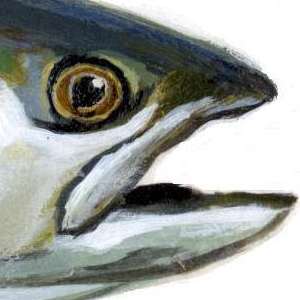There’s another angle to climate change I hadn’t seen coming. Not only are some of our favourite fish species and seafoods facing extinction due to warming seas. All sea foods may be getting riskier to eat due to bacterial proliferation…
 “The prevalence of Vibrio [bacteria] in seafood is expected to increase both globally and in Europe because of clim-ate change, especially in low-salinity or brackish waters,” the European Food Safety Authority succinctly stated in its new report. It added that “resistance to last-resort antibiotics is increasingly found in some Vibrio species.”
“The prevalence of Vibrio [bacteria] in seafood is expected to increase both globally and in Europe because of clim-ate change, especially in low-salinity or brackish waters,” the European Food Safety Authority succinctly stated in its new report. It added that “resistance to last-resort antibiotics is increasingly found in some Vibrio species.”
Get serious
‘Land-based’ bacterial infections have traditionally received much more news coverage public health attention than those from the sea. We’re all familiar (some painfully) with the likes of E.coli, Campylobacter, Salmonella, Lysteria, and Botulinum.
But when food borne illness comes at us via infections carried by fish and seafood, we usually just brush it off as, ‘bad oysters’, or ‘old fish’.
But the European Food Safety Authority says, it’s time we got serious about the risk from bacterial contamination in seafood.
What’s Vibrio?
Vibrio, or V. vulnificus, the Cleveland Clinic explains, “is a type of bacteria that can enter your body when you eat uncooked or undercooked shellfish. It can also infect open wounds. It causes a serious form of the illness vibriosis that can quickly lead to sepsis, shock and large, spreading blisters that destroy tissues.”
Vibrio comes in many variations – one of which causes cholera.
The US National Library of Medicine states, in a 2023 article: “The bacillus is found worldwide. […] V. vulnificus (see photo, left), though the incidence of infection is [relatively] low, has the highest number of seafood-related deaths in the United States.”
Why is Vibrio risk rising?
It’s simply because climate change is causing not only sea level rise but sea water warming. And rising water levels – usually caused by polar ice melting – also cause surface water salt levels to drop. Making the places our favourite piscatory pleasures inhabit much more attractive environments for bacteria.
The Centers For Disease Control have noted that vibrio infections spike during heat waves.
What can we do?
It’s beyond our means, as mere humans, to directly address the causes of sea water warming. But we can take defensive measures against the rising Vibrio threat.
Seafood harvesters are already changing the way they operate to minimize their take of potentially infected stocks. But it’s up to all of us to take extra care when buying fish and seafood to ensure that the stuff we’re getting is safe top eat. We, likewise, have a responsibility to ourselves and those we feed to make sure fish and seafood are prepared properly, cooked to a safe temperature, to ensure that any bacteria present are eliminated.
And it might be a good idea to ‘pass’ on raw oysters, ceviche, certain sushis and similar uncooked seafood dishes in future.
My take
The name of the game is ‘awareness’. As is usually the case in these situations, we can’t assume the other players in the food chain are always doing their jobs properly. In the final analysis, we have no one but ourselves to blame if we get sick from food borne causes…
~ Maggie J.

